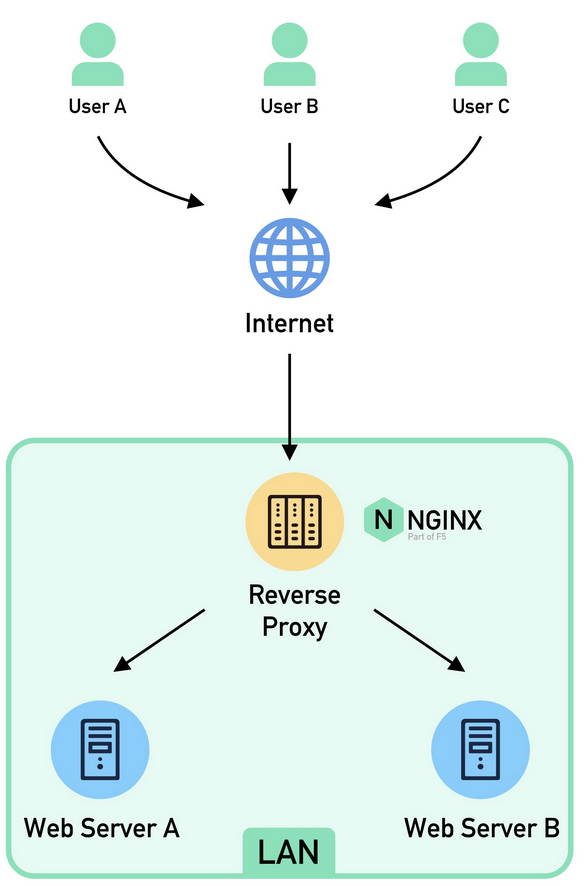Abstract

- Sits between Internet and Server that accepts a request from the Client, forwards the request to server, and returns the results to the client as if the proxy server had processed the request
- The client doesn’t know which destination server it is connecting to. However, some can add HTTP Headers to tell the client which destination server it is connecting to
- We can have multiple layers of Reverse Proxy between the client and server to form a Ingress Service
- For traffic that is coming in
Benefits
Load Balancing
- Distribute traffic from all clients to servers evenly to prevent any single server from overloading
Protection Against DDoS
- IP Address of Servers is hidden behind Reverse Proxy from clients
- And reverse proxy is usually a cluster of many many servers that can share the DDoS traffic
Cache Static Content
- The static content can be cached at the reverse proxy
- This removes some load from the servers and it is faster for the client to get back the requested resources
Handles SSL Termination
- Since the reverse proxy sits within the same trusted network as the server
- We can perform SSL Termination on the reverse proxy, so the server can focus its compute resources on fulfilling the requests from clients
Ingress Service
- An architecture that take advantage of Benefits of Reverse Proxy (反向代理)
Example
- Cloudflare’s Edge Servers as Layer 1 to have Protection Against DDoS and Cache Static Content
- Then API Gateway/Load Balancer as Layer 2 to perform Load Balancing and Handles SSL Termination
- Lastly, there is a fast connection connects Cloudflare’s Edge Servers & the API Gateway/Load Balancer to facilitate reliable and fast communication between the 2 layers
- In this case, both Cloudflare’s Edge Servers and API Gateway/Load Balancer are reverse proxy
